By the year 2025, industry analysts predict the healthcare industry will undergo major shifts, including a noticeable gap in the number of available healthcare providers. A combination of more insured patients, an aging population, a rise in the number of veterans with medical issues, and a shortage of doctors pose challenges to an already stressed system. Advanced practice providers like nurse practitioners and physician assistants are vital to helping close the gap between patient demand and provider supply.
However, attracting skilled advanced practice providers is only half the battle. Retaining these skilled health care providers and integrating their roles into a hospital's daily functions is just as critical. These providers' roles also have to be integrated in a way that satisfies them and the doctors they work with. The following are crucial components to a successful integration between advanced practice providers and physicians in a hospital environment.
Regulatory Research
The scope of an authority advanced practice providers have in prescribing treatments vary across different state and government organizations. For instance, some states require a doctor to be on-site while an advanced practice provider is seeing patients. Insurance reimbursement and billing rules may also differ between states and government organizations. The availability of different practice models is yet another variable that can be inconsistent throughout the United States. For example, some medical practices operate under independent models, while others operate under shared models. Under an independent model, an advanced practice provider sees and treats patients directly, but consults physicians when a critical case presents itself. A shared model is when both the doctor and the advanced practice provider see and treat patients directly.
Role Definition
Defining the roles of advanced practice providers in a medical facility comes down to identifying the existing gaps and how the practitioners can fill those gaps. A study of advanced practice providers in oncology found that 85 percent of APP’s time was spent performing patient counseling, prescribing treatments, and managing follow-up care for patients. In comparison with treatment administered by traditional doctors, patients' chronic disease management was either the same or improved under the care of nurse practitioners. By clarifying the roles, responsibilities, and expectations of advanced practice providers, patient care can meet or exceed current quality standards.
Consensus Building
One of the challenges for physicians in integrating advanced practice providers into medical practices is that doctors have trouble delegating responsibilities, especially when the advanced practice providers are new or have not established a track record yet. This can lead to frustration on both sides, particularly if doctors expect advanced practice providers to be able to perform their jobs without much direction and advanced practice providers need or expect stronger leadership from physicians. It is crucial that both the providers and physicians collaborate and view each other as colleagues. However, it is just as important that all workers in medical facilities treat APPs as collaborative colleagues.
Orientation
Besides a collaborative working environment, the onboarding process is essential to acclimating advanced practice providers. A thorough onboarding process makes new employees feel comfortable with the facility itself, as well as policies, procedures, and co-workers. While there are many components to the onboarding process, at a minimum, it should include a general HR/organizational orientation, a nurses' orientation, a physician and resident orientation, and an advanced practice provider orientation geared towards individual departments. The benefits of a complete onboarding process include improved productivity, reduced stress and frustration, increased job satisfaction, and improved retention rates. Overall, a complete onboarding process leads to better employee experiences and satisfaction rates.
Without regulatory research, role definitions, consensus building, and a thorough orientation process, the first day on the job will likely be a disaster for advanced practice providers. This can be detrimental to not only the medical facility's mission but to patient care. Simply put, closing the gap between available medical practitioners and patient demand means ensuring all practitioners have the resources they need to feel welcome and be successful.


